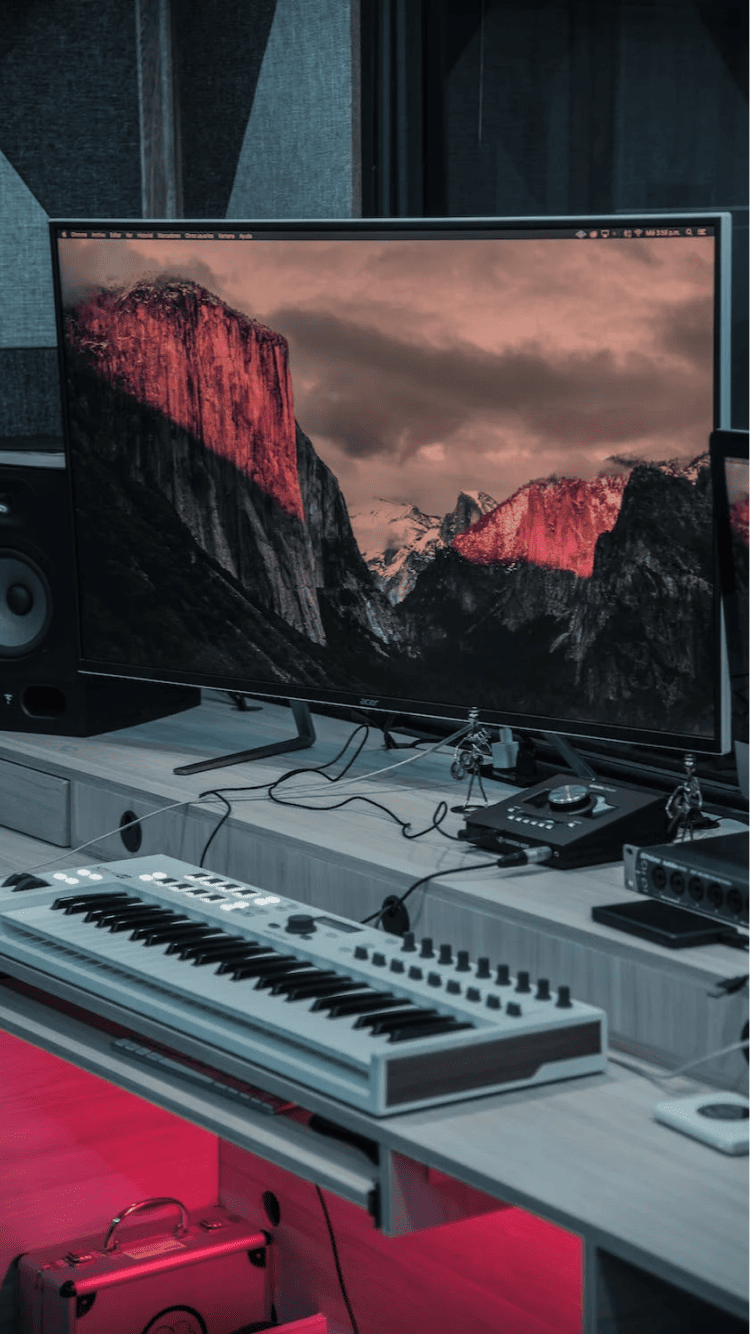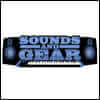Audio Demos
- Sakura Traditional (arr. Wilbert Roget, II) 1:35
- Koto Solo (Traditional) Andrew Aversa 0:41
- Eastern Morning (Contemporary) Andrew Aversa 1:03
- Koto and Shamisen Duet (Traditional) Andrew Aversa 1:10
- Bass Koto Dreams (Contemporary) Andrew Aversa 1:10
Product Info
Nearly 4,000 detailed samples
Recorded in a pristine studio environment with close and room mics so you can dial in the perfect amount of air.
Three instruments included
Koto, bass koto, and shamisen, all played by master instrumentalist Masayo Ishigure.
Traditional and extended techniques
Koto includes finger picks, mordents, octaves, hits, pizzicato, tremolo, harmonics, hard plucks, scrapes, phrases, and glissandos (tonal and atonal).
Bonus FX patches
Nine beautiful custom patches created with custom sound design techniques for rich plucks and pad-like tones.
Authentic sound through deep sampling
Up to 5 dynamic layers and 4 round robin variations per note.

Features
Evocative user interface inspired by Japan
Easy mic mixing, per-artic ADSR
Flexible microtuning
Flexible articulation mapping
Built-in FX rack
Requirements

4GB of disk space
7200 RPM hard drive or solid state drive recommended.
4GB of RAM
More RAM allows you to load more patches simultaneously.
2011 or later CPU
This library does not require significant processing power.
Kontakt 5.5.2+ Full Version
This library is NOT compatible with the free Kontakt Player.
Kontakt Requirements - Mac OS
Intel Macs (i5 or higher): macOS 10.14, 10.15, 11 or 12 (latest update).
Apple Silicon Macs (via Rosetta 2 & natively on ARM in Standalone or in hosts that support it): macOS 11 or 12 (latest update)
Kontakt Requirements - Windows
Windows 7, Windows 8, or Windows 10 (latest Service Pack, 32/64-bit). Intel Core i5 or equivalent CPU. Graphics hardware support for OpenGL 2.1 or higher. Windows 10 strongly recommended.

Tutorials
Reveal Trailer
Featured Artists & Composers

Jimmy Hinson
Black Ops 4, Mass Effect 2, There Came An Echo, Borderlands 2
“Between Shreddage, Super Audio Cart, Juggernaut, and Mega Brass I don’t remember the last time I haven’t used an Impact Soundworks instrument in a track. The attention to detail is astonishing and it’s all so easy to use out of the box, which is a big deal.”

Neal Acree
World of WarCraft, Diablo III, StarCraft II, Overwatch
"Impact Soundworks has some of the most creative and innovative libraries out there. From world instruments to the insanely deep sampled Shreddage guitar series the Impact catalog is full of must-haves and unexpected and inspiring surprises. Highly recommended!

Mike Reagan
Invincible Fight Girl, Powerpuff Girls, Trials Evolution, God of War, Twisted Metal
"A big thanks to the team at Impact Soundworks for putting inspiration at my fingertips! Your sample libraries are in heavy use in my Orchestral, Rock and Pop templates, and always visible in my top-tier Cue-specific Kontakt. Layering your Shreddage libraries on top of my live guitar tracks creates so much depth, and I get so much out of so many of your other libraries - too many to name. A+ programming and sonic goodness gang!"
We created Koto Nation out of a desire to see traditional Japanese instruments receive a deep, thorough sampling treatment, much like our acclaimed North Indian sample library Sitar Nation. At the time, shakuhachi and taiko appeared in many Western film soundtracks, but other traditional Japanese sounds were not readily available at a high standard.
This library includes a massive number of samples spanning a wide variety of both traditional and extended playing techniques, with both close and stereo room mic positions. A total of 25 main patches spread among the three instruments cover all crucial playing techniques, such as sustained picks with a plectrum, pizzicato, octaves, glissandi of multiple types and speeds, vibrato, tremolo, mordents (pitch bends), and mutes, as well as extended techniques such as atonal glissandi, finger scrapes, string hits, and hard plucks.
Multiple dynamic and round robin layers were recorded for each articulation, as well as variations in speed or tonality where appropriate; for example, the koto tremolo can be played at two main speeds (with fine speed control), mordents can be set to whole-tone or half-tone, glissandi can be played slow, fast and in ascending, descending or mixed order, and so on. This incredible depth of sampling allows for unparalleled realism, allowing the instruments to stand alone in a solo context as well as in a larger composition.
The koto and bass koto were recorded in a small, well-treated studio room using a Beyerdynamic
MC834, Neumann TLM-170, and two Neumann KM-184 microphones running through an extremely transparent Millennia HV-3D preamp. We recorded the shamisen using the MC834, TLM-170, and KM-184 mics through the same chain. The recordings perfectly capture the actual sound of the koto; there is very little coloration from the equipment. If you close your eyes and imagine you’re at a live performance, the sound is identical — we compared them side by side!
Koto
The national instrument of Japan, and one of the oldest stringed instruments in the world! The koto has 13 strings with an equal number of movable bridges allowing the player to adjust tuning, something that is often called for in pieces. It is traditionally played using three finger picks used to pluck the strings, but a variety of other techniques have developed, such as finger tapping, harmonics, and pizzicato.
Bass Koto
Developed in the early 20th century, the bass koto is a much larger version of the standard koto which adds four additional strings and allows for much lower pitches to be played. Its deep, warm sound and large range has made it popular in some forms of Japanese traditional music as well as contemporary music.
Shamisen
Like the koto, this three-stringed instrument was developed centuries ago and became an integral part of Japanese music, perhaps most associated with its role in traditional theater where it is still used. It is typically played with a large plectrum, and can be played solo, used to accompany singing or other instruments. Many playing styles have evolved over the years — we recorded a shamisen constructed and performed in the classical jiuta style, as opposed to the tsugaru style typically used in rock or pop music.
Special FX
Also included in the Koto Nation library is a set of 9 “FX” patches, which apply processing to the core audio to take it in new, musically interesting directions. These sounds range from granular pad textures to warm sustains, drones, airy resonances, percussive hits, distorted synths and eerie ambiances.
We are honored to feature the performance of world-renowned Japanese instrumentalist Masayo Ishigure. A student of koto legends Tadao and Kazue Sawai, Ms. Ishigure has continued their legacy and given koto, shamisen, and vocal performances all over the world.
She has worked with, among others, John Williams for his award-winning score to Memoirs of a Geisha, alongside Yo-Yo Ma and Yitzhak Perlman. Ms. Ishigure’s numerous acclaimed performance venues include Lincoln Center, Carnegie Hall, the Metropolitan Museum, Harvard, Yale, Princeton, Columbia, the Smithsonian Institute, and as a guest artist with the Seattle Symphony, Hartford Symphony, San Diego Symphony, and the New Haven Symphony Orchestra.
Reviews

Koto Nation – Sounds and Gear
“This is all that really matters at the end of the day for most, and this has a very detailed, authentic sound. For me, it’s awesome, it’s not a general use, all around instrument. It’s specific to the instruments it covers, and it covers them well. […] At the end of the day, a great sound is a great sound, and with all the articulations in this library it’s really easy to find what you need. It’s priced well within the reach of everyone from hobbyists to professional composers, so that’s always a plus.” (4.5/5)
JK Swopes (Sounds and Gear)


